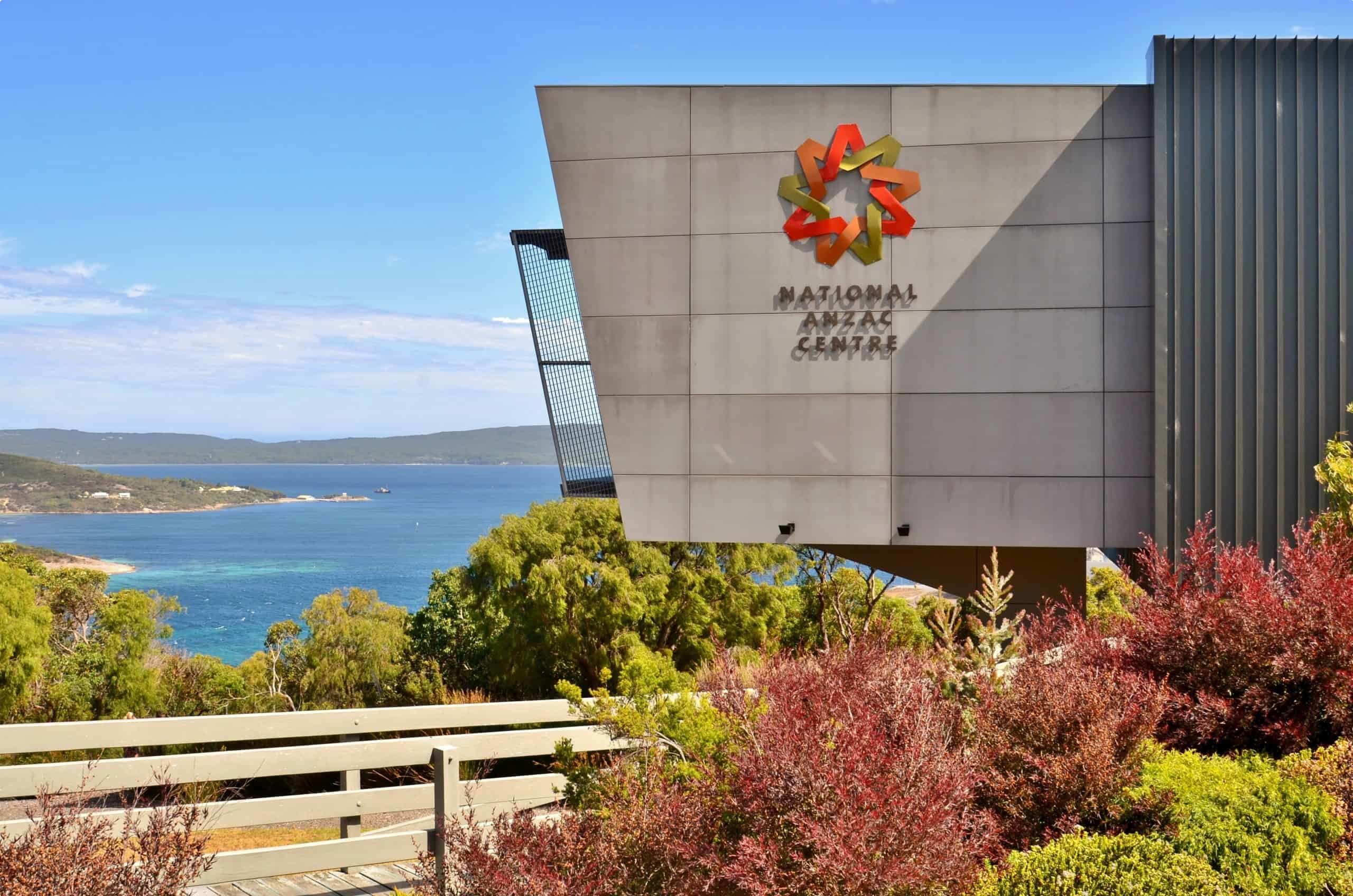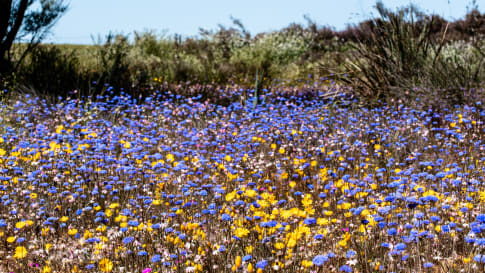Albany and ANZAC, Western Australia
Albany is the southernmost town of Western Australia. The Wildflower small group tour visits this historic town with a strong ANZAC connection. Albany before the Swan River colony, later to be known as Perth.
28 Apr 20 · 5 mins read

Albany and ANZAC, Western Australia
Albany and its surrounds was home to the Menang Noongar people, the area was called Kinjarling which means “the place of rain”. Archaeological excavations have found evidence of Menang Noongar people sites dating back over 18,000 years. The earliest evidence in North West Western Australia suggest indigenous Australian settlement dates back close to 60,000 years.
Today, Albany is the southernmost town of Western Australia. Lying on the northern shore of Princess Royal Harbour on King George Sound. Albany was settled some three years before the Swan River colony, later to be known as Perth.
Early European Exploration
The first recorded sighting of the King George sound was in 1627. The following year the first map the south coast was produced which shows a bay and islands that is possibly King George sound.
The Dutchman François Thijssen in 1627 is the earliest recorded visitor. The following year the first map the south coast was produced which shows a bay and islands that is possibly King George sound.
European Explorers had been reaching Albany for some time prior to the British. .
In October 1800, the Baudin Expedition set sail from Le Havre in Normandy, France with two ships. Separated by storms, the two ships charted the Western Australian coast independently from Cape Leeuwin in the south west corner to Joseph Bonaparte Gulf near Wyndham in the north. With 23 scientists in the party, over 200,000 specimens of flora and fauna were collected. The Expedition was responsible for hundreds of French place names in Australia, of which around 240 are still in use in Western Australia. Baudin charted nearly two thirds of the Australian coastline.
In 1826 Major Edmund Lockyer arrived abroad the Brig Amity to establish the first settlement in Western Australia. In 1832 the Governor of the Swan River Colony, Sir James Stirling visited the settlement. With the possibility of moving the Western Australian Capital to King George Sound he renamed the town Albany after the Duke of York and Albany.
Albany became an important port for ships travelling from Europe to the Eastern States and for people travelling to the West Australian gold rush. By 1898, some 500 passengers a week were disembarking in Albany from the Eastern States.
Due to the King George Sounds strategic importance and the threat of War between Russian and Britain in the mid 1880s an agreement was reached in 1889-1890 to build a defensive position in Albany. The position was completed by 1892.
Today Albany is a regional service town. Whaling was an activity associated with the town until 1978.
The importance of ANZAC
Albany was also the final departure point for the first ANZAC (Australian and New Zealand Army Corps) convoy which served in the 1915 Gallipoli Campaign during the First World War. The Anzacs, part of the Allied expedition, left Australian soil in November 1914 to train in Egypt, with the aim to capture Constantinople on the Gallipoli Peninsula. Constantinople was the capital of the Ottoman Empire which was allied to Germany. The ANZAC force landed in Gallipoli on April 25, but suffered heavy casualties. Every April 25, Albany and the rest of Australia and New Zealand commemorate ANZAC Day to remember the sacrifice of the more than 10,000 ANZACS who died in the war, and of all Australians and New Zealanders who served and died in all wars and conflicts.
The first Dawn Service in Albany was held in 1918 at the altar of St John’s Anglican Church by chaplain Padre Arthur Ernest White, who also led the climb to the summit of Mount Clarence. From this summit, the people of Albany had gathered to watch the Anzac ships gather in 1914 before their fateful departure.
This solemn and meaningful practice in commemoration continued annually in Albany. In 1985, the channel leading into Princess Royal Harbour was named Ataturk Channel after Turkey’s first president Mustafa Kemal Ataturk, whilst the Turkish Government named the landing beach at Gallipoli Anzac Cove. In 2002, a statue of Ataturk was erected overlooking the channel.
On the Anzac Centenary, moving Centenary Commemorations were held in the town between October 30 and November 2, 2014. It was attended by 40,000 people, including the Governor General and the Prime Ministers of Australia and New Zealand.
Also held during the 2014 ANZAC Centenary was the opening of the National Anzac Centre, located within Albany’s heritage listed Princess Royal Fortress, and which overlooks the harbour from which the Anzacs departed for war. This is an important cultural site for those who want to know more about the ANZAC legend, allowing visitors to immerse themselves in the experience through interactive multimedia displays and historic artefacts. The construction of the award winning museum was funded by the Federal and Western Australian Governments, though ongoing funding for upkeep and operation come only from entry fee revenue.

ANZAC commemorations in Albany typically begin with a Dawn Service at Mt Clarence, followed by a Gunfire Breakfast at the Albany Entertainment Centre Forecourt. The ANZAC Day Troop March is held in York St, followed by a Commemorative Service at the Anzac Peace Park and the Nine Pound Gun Firing and Salute at the Princess Royal Fortress in the afternoon. Visitors should also see the Albany War Memorial, dedicated to the town’s fallen soldiers.
Another war memorial with an interesting history is the Desert Mounted Corps War Memorial on Mt Clarence. Originally located at Port Said, Egypt in 1932, the place where Australian soldiers who had left from Albany landed when they reached Africa before heading for Gallipoli.
In 1956 during the Suez crisis the memorial was damaged and desecrated. Three years later it was shipped back to Australia. Unfortunately it could not be repaired and so a sculptor was commissioned to remodel the 9 metre tall statue which depicted an Australian soldier helping a New Zealander. Two models were made. One is in Canberra and the other was unveiled at Albany by Prime Minister Menzies in 1964.
Learn more about Albany and visit the ANZAC memorial landmarks with Odyssey Traveller on our Wildflowers Tour of Western Australia this spring. Our guided tour of the wildflower trail focuses on the Australia’s south west region, particularly the wheatbelt which is home to species unique to the region. Our tour in the south west joins the ‘wildflower way’, joining at Mullewa and making stops at 15 spots on the way to Wubin. After this, our wildflower tour heads west into the outback, stopping at the Avon Valley centre of Merriden, and the ‘wild west’ town of Kalgoorlie, before heading to the wildflower hotspot of the south west. Our tour of Albany and ANZAC memorials will provide us greater insight about this important moment in history.
Odyssey Traveller conducts educational tours focused on history, culture, and architecture, and has been serving global travellers since 1983. Our tour costs are inclusive of all entrances, tipping, and majority of meals.
Articles about Australia published by Odyssey Traveller:
For all the articles Odyssey Traveller has published for mature aged and senior travellers, click through on this link.
External articles to assist you on your visit to Albany and Western Australia:
- Albany, Western Australia
- The National Anzac Centre
- Anzac Albany Heritage Sites
- Anzac History in the Albany Region
- The Ultimate Guide to Western Australia’s Wildflowers
- Why Western Australia’s Wildflowers are so Unique
- Popular National Parks Western Australia
- Five of the Best Beaches in Esperance
- Western Australia’s Best Beaches
Related Tours

15 days
Aug, SepWildflowers tour of Western Australia
Visiting Western Australia
Escorted small group tour for senior and mature travellers as a couple of solo traveller. Upto 12 people of WA's Wildflower regions including Esperance and the Fitzgerald river National park. Local guides and program leader share knowledge about this fascinating region whilst in bloom.
From A$12,250 AUD
View Tour


